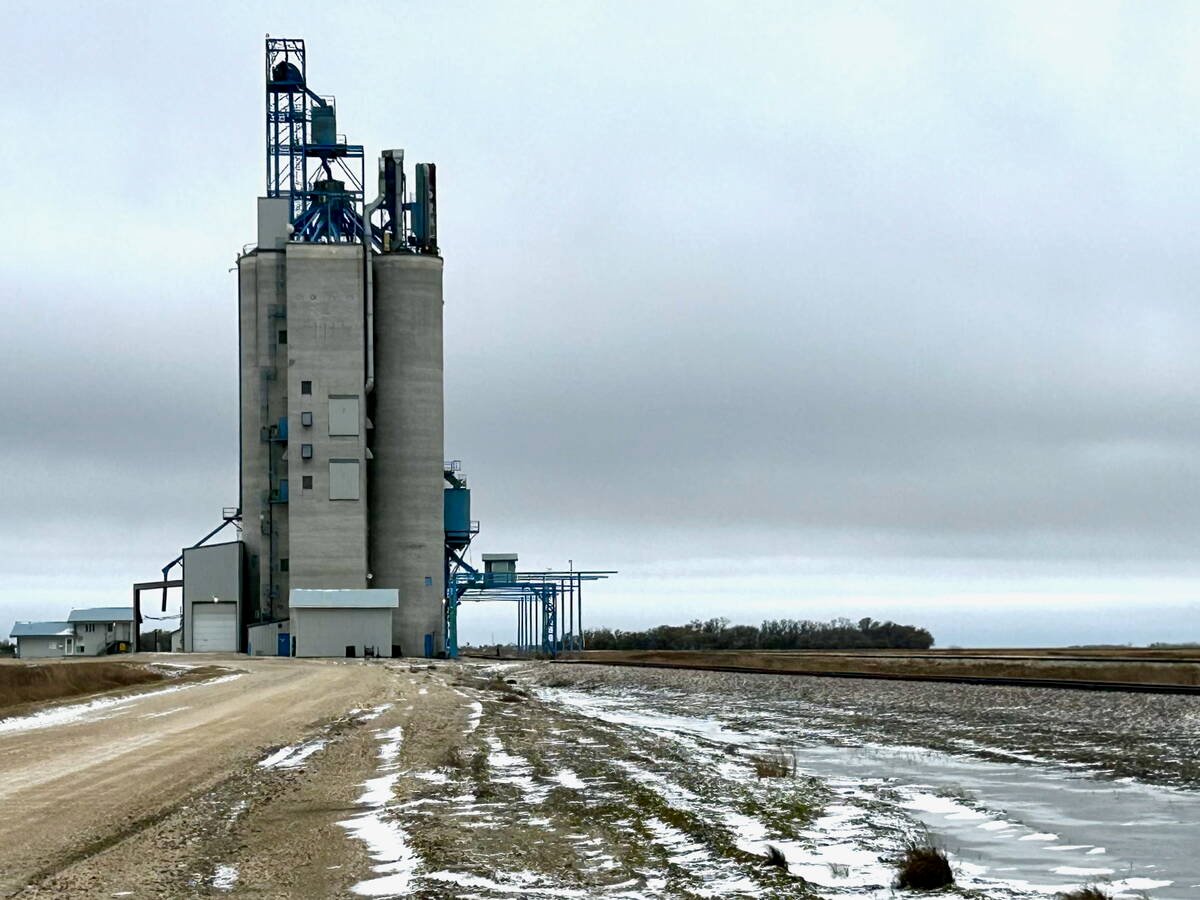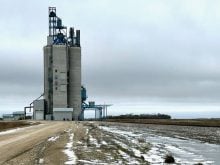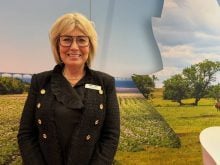If necessity is truly the mother of invention, then a high level of necessity must have driven the earliest zero-till practitioners on the Canadian Prairies as they departed from the centuries-old method of seeding.
Just as the Dust Bowl of the 1930s pressed Charles Noble to develop the Noble blade and George Morris to develop the Morris rod weeder, the early 1970s motivated a new generation of innovators to take the conservation tillage concept another step forward.
This time, the pressing necessity was the search for a way to make winter wheat survive our harsh prairie winters. Winter wheat breeders such as Brian Fowler at the University of Saskatchewan and Elmer Stobbe at the University of Manitoba realized that snow catch from standing stubble was vital for plant survival. Without snow catch, winter wheat could not be viable.
Read Also

Manitoba grain elevator ownership expands
Carman-based Linear Grain buys Fannystelle elevator from Bunge, another three elevators sold to Morden’s BP & Sons Grain and Storage Inc.
If snow catch was to be achieved, it would require a method of placing winter wheat seed into the ground without destroying trash cover. It was that simple.
The earliest zero-tillers may not have been on a deliberate mission to find a new way to farm prairie soils, but their search for standing stubble led them to the development of a whole new method of farming known today as zero-tillage.
Don Flaten was a soil science student during much of this time, first at the U of S and then at the U of M, where he is now a soil science professor. In 1985, he was the sole provincial soils specialist for Saskatchewan.
“Through those years in the late ’70s and early ’80s, we had a number of coincidental factors that were ripe to make direct seeding and zero-tillage a reality,” recalled Flaten.
“We had some real pioneers Ñ researchers, farmers and industry people Ñ who dedicated themselves to demonstrating how zero-tillage could be practical and economical.
“Along with that, we had technological developments such as air seeders and high clearance hoe drills that allowed farmers to seed into standing stubble. And the other big technological breakthrough was that we finally had a non-selective herbicide, Roundup. None of this would have been possible without Roundup.”
The challenge of profitably growing crops without cultivation was nearly impossible before glyphosate. Although there were a number of selective herbicides on the market, the cost was exorbitant if a producer wanted to apply a variety of products to one field to kill a whole spectrum of weeds.
The agricultural community understood that total weed burnoff would be essential if crops were to be produced without cultivation. Farmers were ready for a product like Roundup.
Did the job
Some of the pioneer zero-tillers recall paying $30 per litre or more for Roundup when it was introduced in the early 1980s. But Roundup did what Monsanto said it would do, so they paid the price.
Each time the price came down, more farmers moved to a zero-till system. When the patents came off Roundup in the mid-1990s and other glyphosates such as Touchdown hit the market, zero-till acres were able to take a big leap.
Today, with glyphosate available at $5 per litre or less, producers are able to use the product at the full recommended rate rather than trying to stretch their dollars by applying it at a lower rate as many had done for years.
Flaten said another significant factor in the early 1980s was strong support from the provincial and federal governments. This was the period when the Prairie Farm Rehabilitation Administration was transforming into more of a soil-oriented agency.
Breaking new ground
Flaten said it would be difficult to list all the people and agencies that provided impetus in the early days of zero-till, but he emphasized that producer groups rate near the top.
The Alberta Conservation Tillage Society officially formed in 1978. The Manitoba-North Dakota Zero-till Farmers Association, or Man-Dak, formed in 1982. The Saskatchewan Soil Conservation Association formed in 1987.
These groups broke new ground by figuring out their own solutions to zero-till challenges and then telling researchers and industry what they needed to make zero-till work on a large scale.
“To be honest, Manitoba led the way,” Flaten said. “Out in Saskatchewan, we capitalized on their work. Man-Dak had a group of farmers like Jim McCutcheon, Bob McNabb, Garth Butcher and a bunch more who seemed to have the ability and the wisdom to envision the future of zero-tillage.
“In the mid-’80s I personally received a lot of what you might call ‘direction’ from a Regina farmer by the name of Clare Taylor. He’d drop into my office to bring me proceedings from the Man-Dak zero-till workshops and other articles and papers he found on zero-tillage. He kept explaining to me how this zero-tillage thing was going to change farming in Saskatchewan and how I’d better get my butt in gear to get the provincial government involved.
“All these factors were floating around in the mid-’80s, and from my own Saskatchewan perspective, it all started to come together when the Manitoba-North Dakota Association agreed to hold their annual winter workshop in Regina in January of 1986. That was the spark that lit the whole zero-till thing on fire prairie-wide.”
Flaten said zero-till farmers from Manitoba and North Dakota who travelled to Regina showed Saskatchewan farmers that putting seeds into the ground without working the seedbed was a viable alternative to cultivation.
The workshop attracted nearly 1,300 producers. Keynote speaker Grant MacEwan set the stage for the next steps in conservation tillage. The SSCA and the Save Our Soils program grew out of that January meeting, said Flaten.
Early zero-till demos in Sask.
Larry Koturbash of Indian Head, Sask., said Saskatchewan had a number of five-acre zero-till demonstration plots in producer fields in the early 1980s, before SSCA and SOS.
Koturbash, an agrologist for Sask Ag at the time, said, “Our first forays into zero-till were with a Haybuster and a Concord with backswept knives.”
He said planting seeds without cultivating the field was a radical idea then. Even when the experimental zero-till plots were successful, the equipment was intimidating for most farmers.
Initially, there were only three big disc drills on the market specifically built for zero-till. The most common in the prairie provinces was the Haybuster, built just over the border in Jamestown, N.D.
The Yielder and Pioneer came from the Pacific Northwest states.
Koturbash said none of those big zero-till drills had air systems, so it was always a major job to clean out the boxes and cups when changing crops. He said all three drills were expensive, demanded lots of power to pull and they could get stuck badly because of their weight.
“Then Jim Halford built us a prototype zero-till demo drill. He had already built one for his own farm, so we had him build another for the demos. That was the basic idea for the drill that eventually became the ConservaPak. I think that demo prototype is still at work today somewhere out west of Saskatoon.
“We used all three types of drills to show people that it really was possible to grow a crop without working the soil.
“Looking back now, I’d have to say the advent of the air delivery system is what made direct seeding practical. If we had been stuck with those big drills for another 10 years, it would have meant another 10 years before zero-till caught on. “
Flaten adds to that thought.
“In 1978 Bourgault bought the patent for an air delivery system that had been developed over the years by a farmer at Lajord, Sask., by the name of Jerome Bechard. Developing that air delivery system and then making it available to farmers was another of those pivotal points in the evolution of zero-till that all came together within one decade.”
Until then, a farmer wanting to practise zero-till had to build his own drill or spend a lot of money for one of the big drills. But air delivery put affordable zero-till seeding technology into the hands of every producer who wanted it.
Flaten said there’s another side of air delivery that people often don’t recognize. Many farmers at that time were looking for a way to seed more acres in a day. They weren’t necessarily looking for zero-till, but the efficiency and the economics of the air seeder drew them into the zero-till system.
Air delivery did not force a producer to do zero-till. Many producers used air in a conventional cultivation seeding system. But the zero-till method of growing crops made air delivery much more viable as farm size increased. The two grew together.
Alberta jump start
Although Alberta was the first of the three prairie provinces with a producer group to foster zero-till research and extension, it was the last province to adapt zero-till on a wide scale.
Province-wide there has been a higher dependence on cattle versus grain compared to the other two provinces.
Alberta also has had a history of fuel prices that were more farmer-friendly.
When zero-till did start rolling in the early 1980s, a hub of activity was in the Foremost area, near the U.S. border.
Dan Stryker was one of a small group of farmers who saw that zero-tillage was going to be the future of farming. Much of Alberta’s early zero-till work was done on his farm and the farms of his neighbours.
“It’s probably true that Alberta was slow off the line,” concedes Stryker. “But once zero-till caught on here, it took off in a hurry and our zero-till acres really shot up.”
Stryker’s first zero-till drill was a homemade machine, as were many of the zero-till machines in the early 1980s.
His next step was to buy the first Victory Seed-O-Vator prototype that came out of the Lethbridge factory.
In a time when zero-till itself was still revolutionary, one-pass seeding was virtually unheard of.
Stryker feels the Seed-O-Vator was ahead of its time.
“That was a true one-pass seeding system. It had cultivator shovels, a turning rod at the back, on-row packing and it was fed by a modified Prasco SuperSeeder air tank. So we were really back near the origin of air delivery and one-pass seeding.
“The first Seed-O-Vator was the 38-foot prototype, and that unit wasn’t anything to be proud of. It had a lot of little glitches, but Victory stuck by the unit and fixed things until we were getting the kind of seeding results we wanted.
“We kept that unit and then we bought a second one, a 42-foot drill. We used them both for many years and we finally just wore them both out.”
New Noble bought up Victory and continued making the Seed-O-Vator until it closed its doors. There are still a number of those early drills at work today.
One tractor hour = 10 acres
Stryker has always tracked mechanical efficiency on his farm.
“We’re quite satisfied now that we’ve gotten to the point where we’re seeding 10 acres for every tractor hour. Before we got into full zero-till, we ran two big four-wheel drive tractors and we put 500 to 600 hours per year on each of them,” he said.
“Now we’re farming more acres and we run two big tractors, but we don’t even put 200 hours per year on each. I wouldn’t want to tell you how old these tractors are. They have very few hours for their age. That’s a huge cost savings for us. That’s the kind of math that has driven zero-till in Alberta.”
He said tractors were a major obstacle to the early zero-till efforts of many prairie farmers.
“We ran those big red Versatiles. You just couldn’t wear them out. But they never had enough hydraulic capacity to run an air fan.”
Fertilizer frustration
Richard Walters was another zero-till pioneer from Foremost, Alta. He thinks fertilizer placement limited the early acceptance of zero-till in Alberta.
“When we started in 1984, there was no fertilizer application equipment to go along with those big drills. We ran liquid fertilizer on our farm, so we could work around that problem, but not everybody wants to use liquid.”
Walters said he had been growing winter wheat on chemical fallow, leaving high stubble to catch the snow. But when they received fall rains, the straw got so wet that he could not seed through it. He said a number of producers in his area were trying recropping, but they were working their fields and thus destroying the stubble. He wanted to preserve moisture so he bought a Haybuster.
Walters wished it had worked better. He said soils in his area have too much clay, so he needed some soil disturbance to get good seed to soil contact. With the Haybuster, he could wedge the soil apart and drop the seed in, but he couldn’t get it sealed together again.
“In this area, we absolutely must pack. There’s no choice. There was no packing system that could do the job on this clay 20 years ago. There are still none, in my opinion. I guess you could say it was the technology, or the lack of technology, that took us out of zero-till and ultimately out of farming altogether.”
Within 10 years, Walters had become frustrated with the lack of technological improvements in zero-till. His fertilizer business was growing to the point where one of the two enterprises had to go.
Four consecutive dry years in southern Alberta made up his mind. He decided to stick with fertilizer and drop farming.
Zero-till bankruptcy
The 1980s are spattered with stories of farmers who over-
invested in zero-till equipment, only to find their decision eventually costing them the farm. The investment in one of the popular big drills of the day, along with the high cost of Roundup, which was essential in zero-till, forced some farmers into bankruptcy.
“That’s essentially what happened with us,” admitted Walters. “We didn’t go bankrupt, but there was no way we could continue farming like that. We had a very high investment in the drill relative to how many acres we could seed with it.
“We had 30 feet of drills. We could run no faster than three miles per hour and we only got 30 acres to the fill. We had 3,000 acres to seed. There was no way we could do it. We worked 20 hours a day and we could still not get the crop into the ground on time.
“I’d say those bigger drills maybe worked better because they stayed together better than my Haybuster. But the cost of those big drills was about 10 times too high.”
Veteran zero-tillers admit that in the early years, a number of novices succumbed to the high costs of the drill and the glyphosate burnoff. They point out, however, that for every farmer who went under due to the high cost, there may be many who survived and farm today because of the efficiency zero-till has brought to their farms.
Zero-till grows
In the time since the first winter wheat was seeded into standing stubble, zero-till has grown to account for 50 percent of the seeded acres in Saskatchewan, 33 percent in Alberta and slightly more than 10 percent of the seeded acres in Manitoba.
Nearly all of the technological problems faced by the early zero-tillers have been solved. For example, the problem of seeding into 12-inch sanding stubble has been solved by the move to 12-inch row spacing, along with better residue management.
The hairpin problem, caused when a disc pressed down on a length of straw and pushed it into a hairpin shape at the bottom of the seed trench, is only a vague memory.
Disc and hoe openers are available in a variety of configurations that have helped solve seed and fertilizer placement problems. High capacity air delivery systems allow producers to seed up to a quarter section between fills.
The prairie provinces have a number of drill manufacturers and several prairie companies manufacture disc and hoe openers, packers, carts, manifolds and other zero-till equipment.
Producers will continue to search for greater efficiency in labour, fuel and machinery and a better return on their land investment. At the same time, they are searching for sustainable practices that are environmentally acceptable. Zero-till seems to fit the bill for many of these challenges.
“Today in 2005 we are in the starting position with nutrient management, just like we were in the starting position with zero-till in 1980,” said Flaten.
“Things are lining up right now, there will be some major upgrades in the way we farm, and I can see that it’s all going to be very exciting.”















